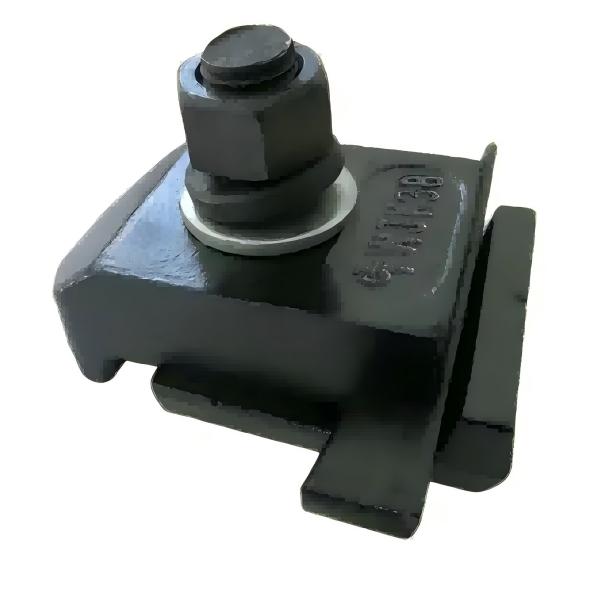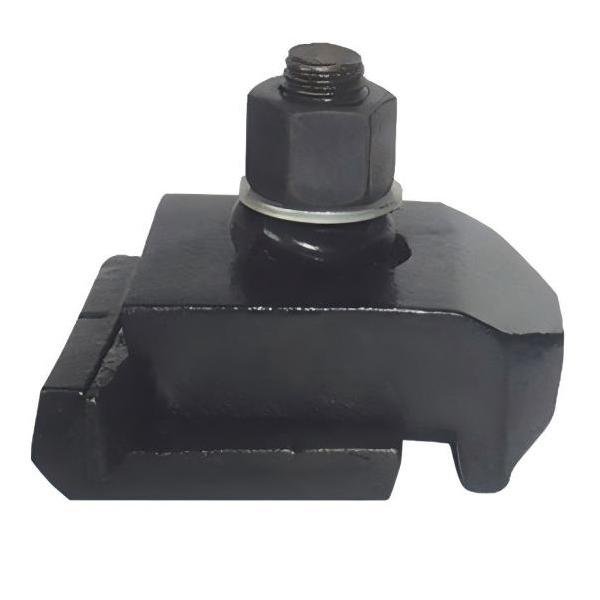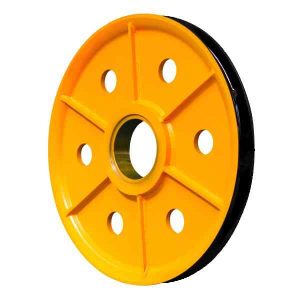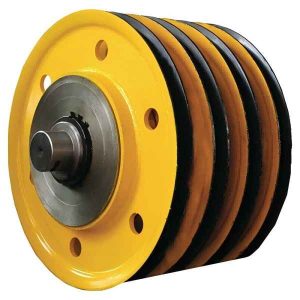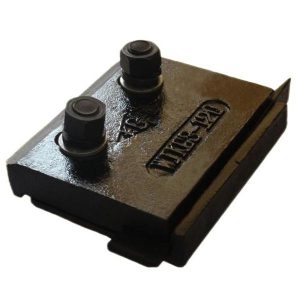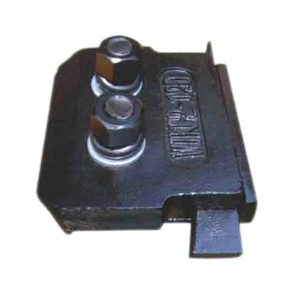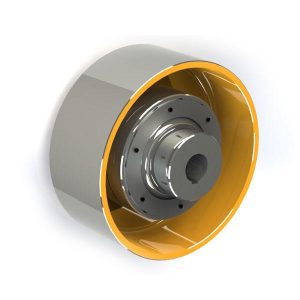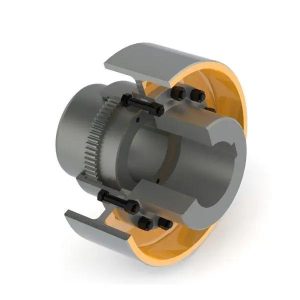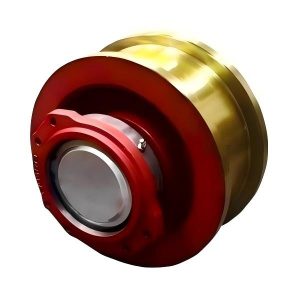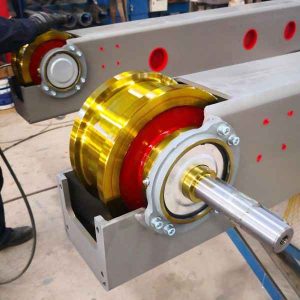WJK Rail Clip
Specifications of WJK Rail Clip
- Models: WJK-TG38, WJK-TG43, WJK-TG50, WJK-TG60, WJK-QU70, WJK-QU80, WJK-QU100, WJK-QU120
- Fixing Method: Welded base plate
Features of WJK Rail Clip
The WJK rail clip is specifically designed for use with steel beams, and it has a lifting capacity of 350 tons per set, consisting of seven components in total. This robust design ensures optimal performance across a range of heavy-duty applications.
Base Plate Welding
The WJK base plate is welded to the flange of the steel crane beam using either three-side surrounding welds or two-side lateral welds. This configuration ensures that the horizontal lateral force from the crane is smoothly transferred to the crane beam. Additionally, it minimizes structural weakening caused by excessive drilling on the flange, which significantly enhances the crane beam’s cross-sectional load-bearing capacity.
Ball Joint Connection
The base plate is connected to the lower end of the T-bolt via a ball joint, which allows the T-bolt to remain perpendicular to the upper cover during lateral force application. This connection design also enables slight tilting. As a result, the lateral impact from the crane on the rail, crane beam, and braking system is effectively mitigated, ultimately extending the structural service life of these components.
Gauge Adjustment Plate
The WJK rail clips feature a gauge adjustment plate, which allows for precise fine-tuning of the rail gauge. This feature not only enhances installation accuracy but also reduces deviations in the rail centerline. Furthermore, it includes a dual self-locking mechanism that prevents loosening during operation, ensuring stable performance.
Ease of Installation and Maintenance
The T-bolts and upper cover plates of the WJK clips can be easily assembled and disassembled, significantly simplifying construction and maintenance operations. This ease of installation and maintenance translates into reduced downtime and increased operational efficiency.
Compatibility with Rail Curvature
The upper cover plate is designed to match the curvature of the rail cross-section. This ensures that the rail is tightly secured without hindering its slight longitudinal movement. Additionally, this feature facilitates the welding of full-length rails, making the WJK rail clip versatile in various rail configurations.
Fixed Component Spacing
The spacing between the fixed components is determined based on the crane’s lifting capacity. For cranes with loads ≤275t, the spacing is 600mm; however, for cranes with loads >275t, the spacing is reduced to 500mm to accommodate the increased load.
Welding Material Compatibility
The base of the fixed component is welded to the crane beam using electrode models that are compatible with the material of the connecting components. For example, E4303 electrodes are used for Q235 steel, while E5015 electrodes are preferred for Q345 steel to ensure a strong and reliable bond.
Weld Types Based on Crane Duty
The weld types depend on the crane’s duty level. For medium-duty cranes, two-side weld seams are used, whereas heavy-duty (or super-heavy-duty) cranes require three-side surrounding weld seams to handle the higher loads and stresses.
Bolt Tightening Torque
For medium-duty cranes (Q ≤ 275t), the maximum bolt tightening torque is set at 150N·m, while for heavy-duty cranes, the tightening torque is increased to 220N·m to accommodate the higher forces exerted during operation.
Maximum Lateral Force
The maximum allowable lateral force for the WJK rail clip is 45kN. This ensures that the rail clip can withstand substantial lateral forces without compromising its structural integrity.
By incorporating these advanced design features, the WJK rail clip ensures a secure, reliable, and durable connection between the crane and the rail system, thus improving overall operational efficiency and safety.


